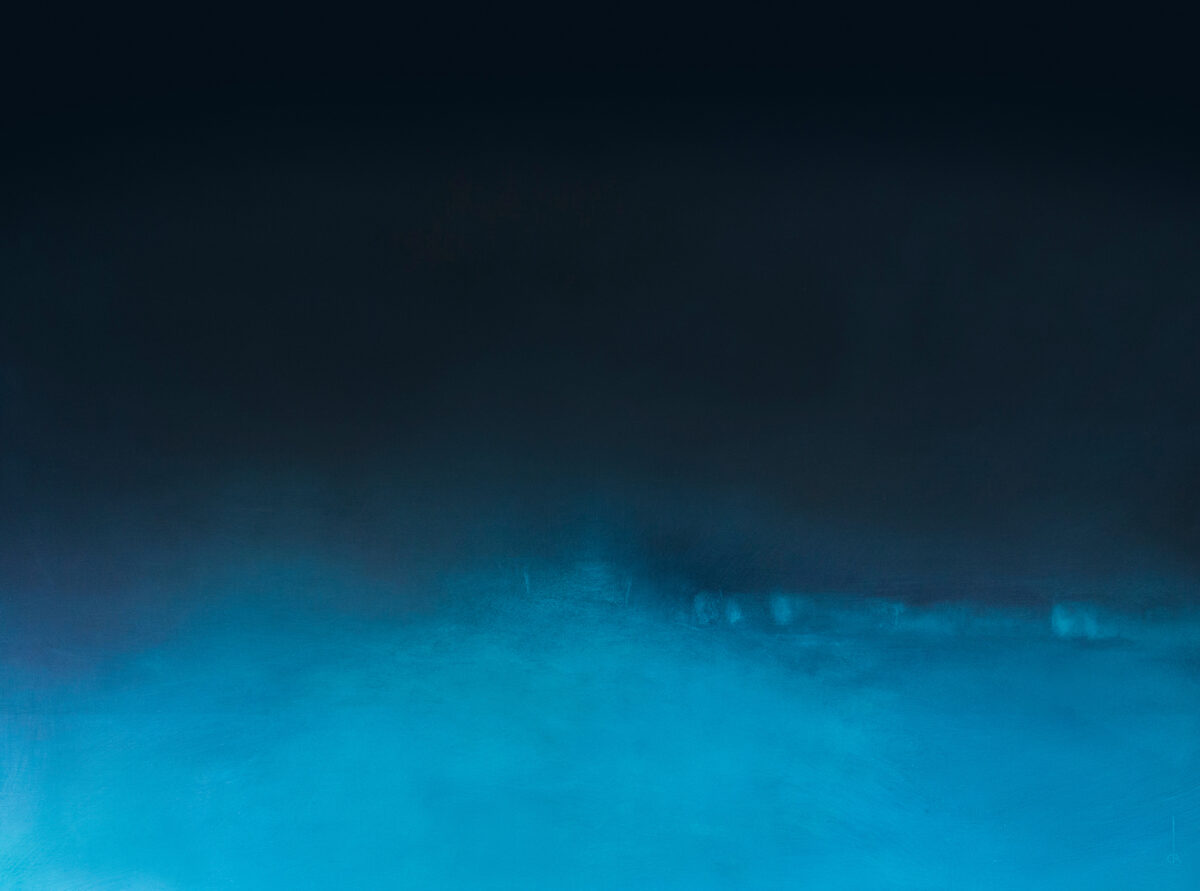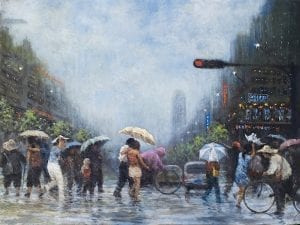Derrick Breidenthal is an award-winning American artist based in Kansas City. He uses painting to communicate themes of peace, power, struggle and renewal. His work is held in several permanent collections, and in 2021 the Albrecht-Kemper Museum of Art in Saint Joseph, Missouri debuted the solo exhibition Nocturnes: By Derrick Breidenthal.
The artist is currently participating in the group exhibition Fresh Perspectives at Walker Fine Art, Denver until 12 March and his work has been longlisted for the Aesthetica Art Prize 2022.
A: Colour is of paramount importance in your work – you use it to pursue specific themes. What is it about the expression of colour that drives you?
DB: I am interested in where my paintings position the viewer psychologically. Colour is my primary mechanism for this. I think we attach a great deal of our memories and experiences to colour. Much more than we realise. It’s a way to establish what we have in common and share. Colour doesn’t lead with an aggressive political statement or a side. Colour can guide shared emotions. So my drive is to use colour as a starting point to connect in a positive, broader manner.
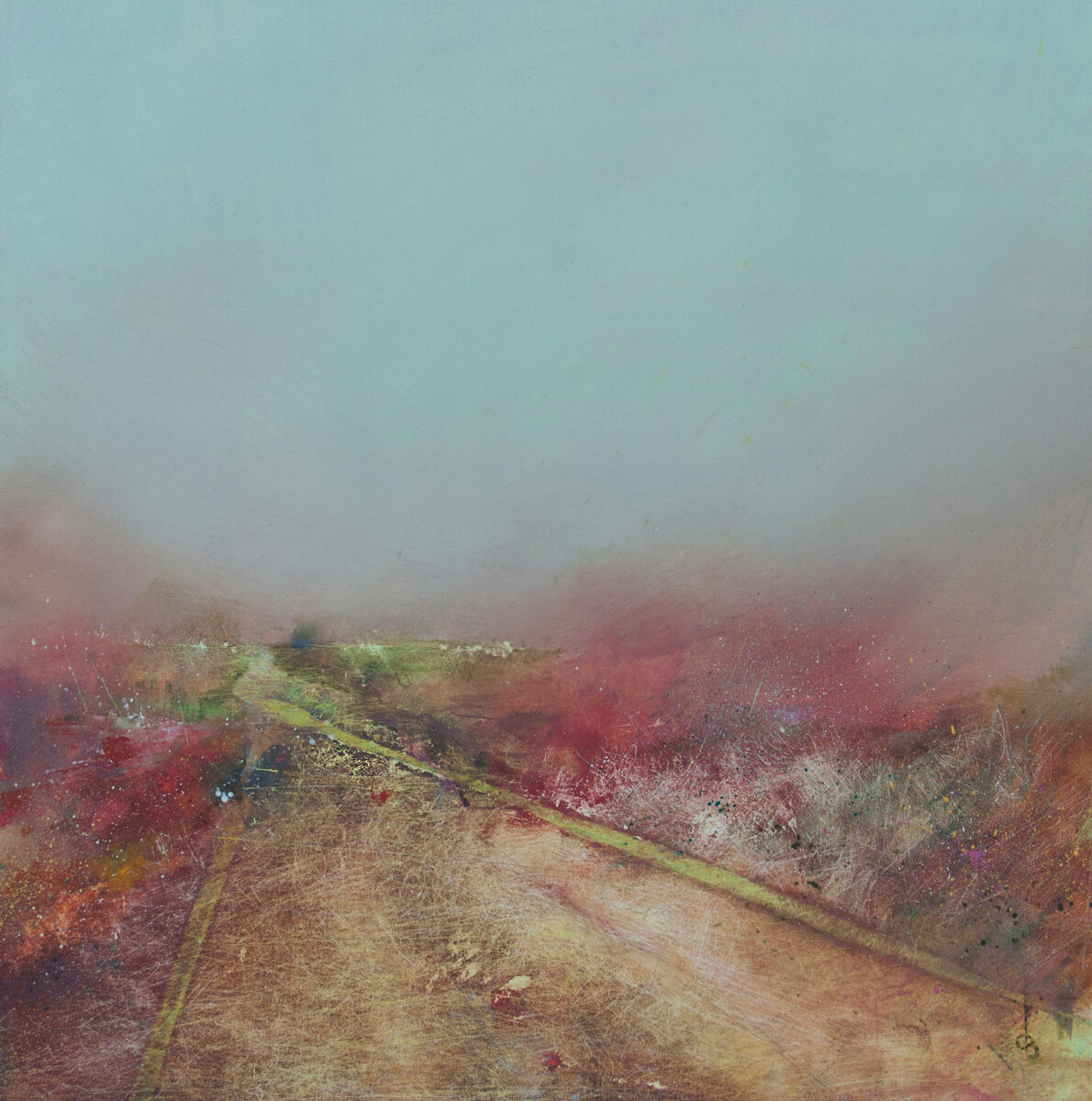
A: In Issue 105 of Aesthetica, we featured Round Bales and Blues Run The Game. How does colour in these pieces relate to the themes you are communicating?
DB: The colour directly impacts the disposition of these paintings. It is meant to change the viewer’s state of mind. Round Bales is a pasture I walk in sometimes at night. The quiet vibration of life and ambience is felt and heard. The colour is nudging the viewer towards humility. And highlighting the intimacy of night, or the fear of the dark, depending on what the viewers experience has been.
Blues Run The Game, borrowed from Jackson Frank, is directly referencing the colour blue. We use blue to describe melancholy and sorrow. The associations we imprint on colour are interesting to me. We use colour not only to describe beauty and physical space, but to communicate emotional condition, joy, fear, caution, etc. I think colour is so much more intricate to our life – it goes far beyond simply paint.

A: Do the landscapes of the Midwest region of the USA influence your work? The region is known for its vast landscapes and “big skies” – what is it about the sky that features so prominently in your work?
DB: I grew up in the Midwest so it is certainly infused. A sky is what? I see it as a moving abstraction. Changing by the second. Constant motion. Infinite arrangements and compositions. It’s air and moisture and heat and cool and colours and movement. It’s emotion directly above you at any moment. If you really just isolate the sky, without anything else it’s not a sky. It’s colour. It’s blends and gradients and shades and textures. So I am drawn to the big skies. How would I not include something that is the thing that I pursue?
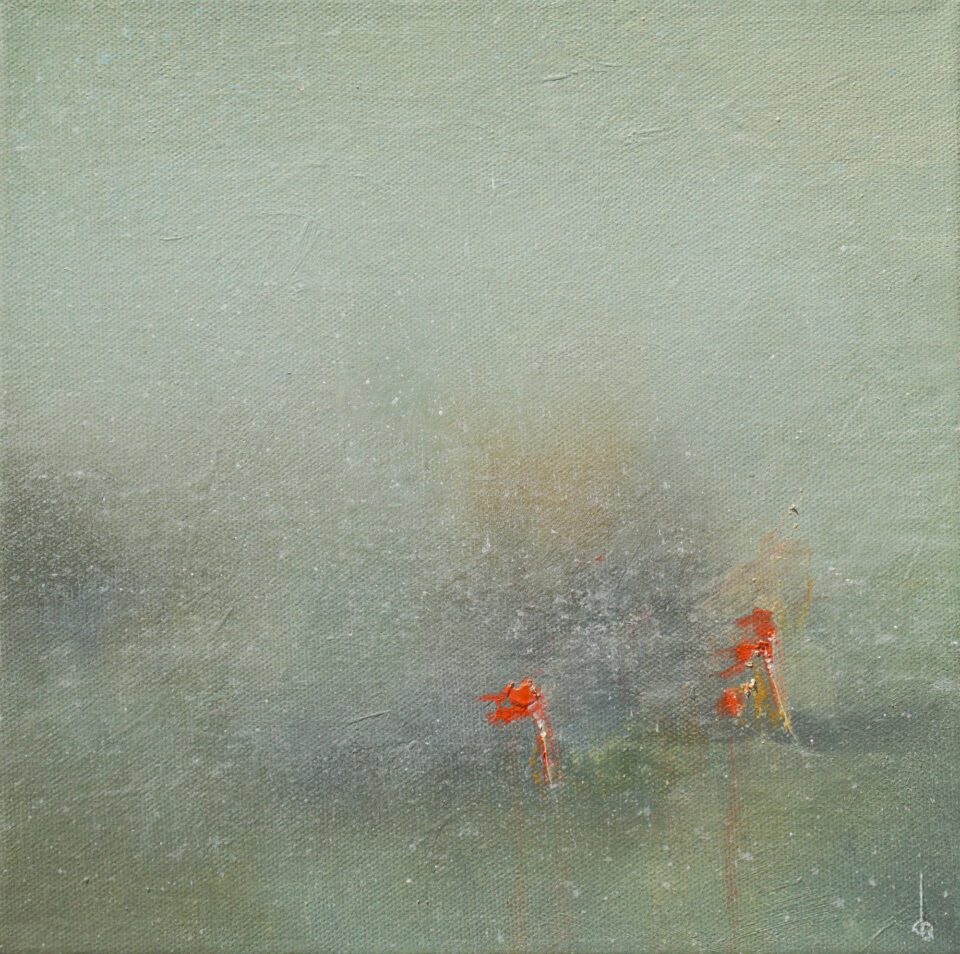
A: Are the places depicted in your paintings real or imagined?
DB: They are always real places. Sometimes I work from reference photos I take, other times I work from mental recall of a location. Or both. A memory of a location is as real to me as being at the location. Many times the memory is more real. I’m not interested in re-documentation. So at any point in the process if the painting is simply re-documenting a photo, I know its time to quit referencing the photo.
A: Thinking about the themes you explore, how important is it for your works to “find a good home” with a collector or gallery?
DB: I couldn’t be doing this for as long as I have without the support of my collectors. I am fortunate as my work changes and evolves that my collectors still support and collect my work, and galleries and museums choose to exhibit my work.
A: How important is the relationship between you and the collectors who commission your work?
DB: It’s important. The relationship requires trust and an interest in creating something unique.
A: You recently revisited some of your paintings from the past ten years. How do you feel when sifting through these works?
DB: Old. There are technical things I find interesting…why I stopped applying paint one way and switched to another. I see the beginning of transitions I thought happened much later.

A: Tell me about your latest works, such as County Road.
DB: Most of my recent pieces are limited-colour palette work. County Road is in this mix. When the sun is pushing through a blizzard you can get these high chroma pink spots that keep shifting and trying to peak through the blowing snow. I’m structuring paintings around one or two colours lately.
A: Why do you think that your vertical pieces are amongst your best works?
DB: The vertical format doesn’t allow you to rely as heavily on a horizontal landscape formula. I just think if you can get a vertical landscape to work well it can be really interesting. It’s a nice way to keep your fundamentals sharp. I certainly paint more horizontal works, but painting vertically some helps the horizontal work stay interesting for me.
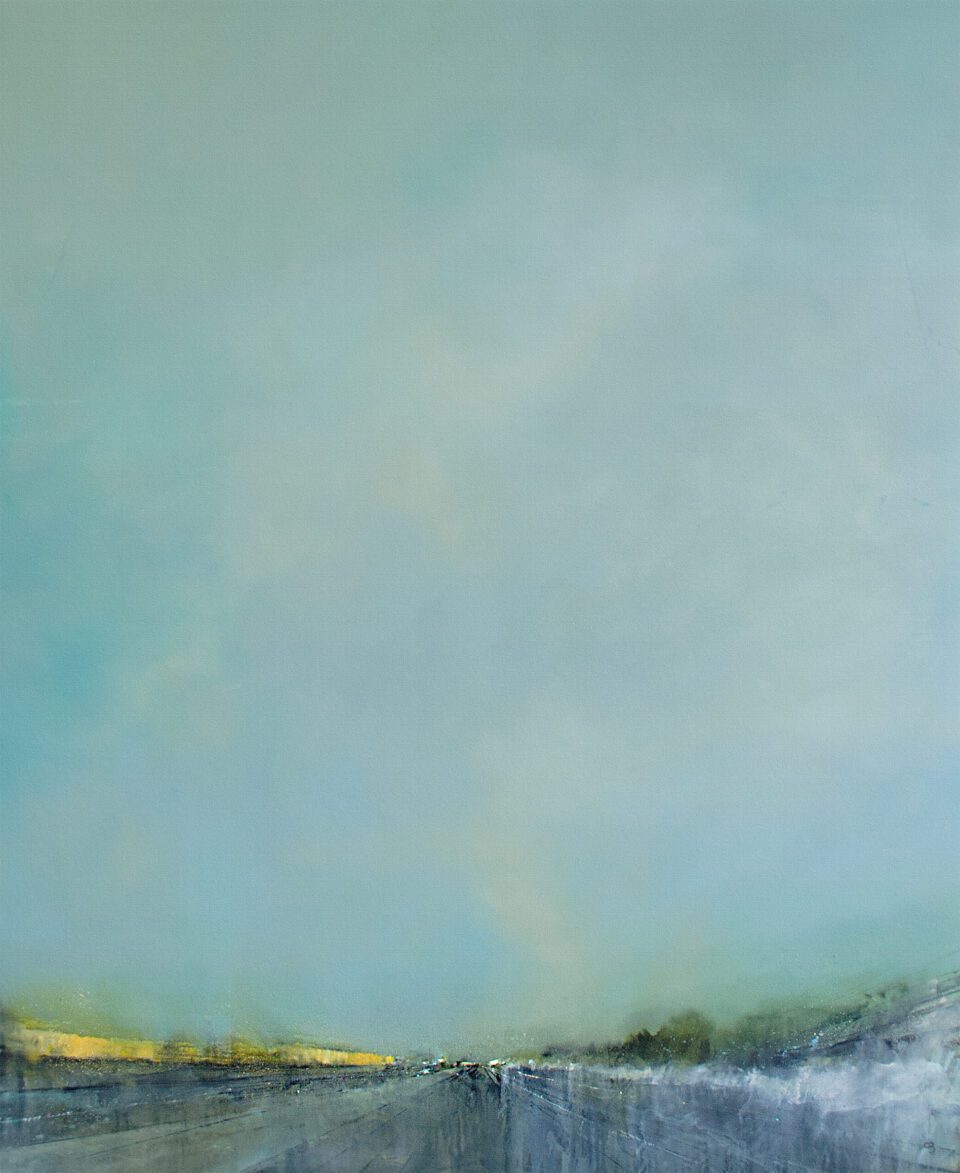
A: How do you think your art practice has evolved over the years? Are you still inspired to explore new possibilities in painting?
DB: It builds on itself year after year. I have more technical skill options and ways I know how to apply paint. And many times I never use them. But I know I can if I need to. If the painting needs it.
I’m still fascinated with painting and my heart can still skip and I still have moments when both hands are shaking with fear and joy because a painting is on the verge of the unexplainable. It can still be emotional and unexpected. Seeing paint in person and knowing it’s simply paint on a surface that is doing whatever it’s doing is still fantastic.
A: How do you thinking painting will evolve over the next few decades?
DB: I don’t think about that much. It will evolve as it should. I don’t think it’s going anywhere. I see and interact with more people than ever that are interested in painting. I think we have fallen too deep into a digital world so I hope there is a better balance in the future. I think artists need to be included and compensated in some way on secondary market sales as a painting changes hands. I think the NFT movement has got that going for it.

A: You’ve mentioned that certain works are “a continuing insight into what (at least my take) is a pretty spot-on visual depiction of ADHD.” Tell me more about this, and how the use of colour and shape have driven these works.
DB: Those are my ten-year-old son’s colour drawings. He has ADHD and I absolutely love to watch him draw. The comment you are referencing is referring to the large amount of equally-weighted visual information / same repeated shapes on his drawing. Every option and decision is equally important. So hierarchy and priority tends to be less clear or visible in one’s head.
That post seems to represent that well. I also think it’s interesting that whatever hierarchy or path you find through his drawing is largely a function of colour. We are so fortunate as humans that we are so different yet so similar. It’s a special combination – I wish we celebrated that more in society.
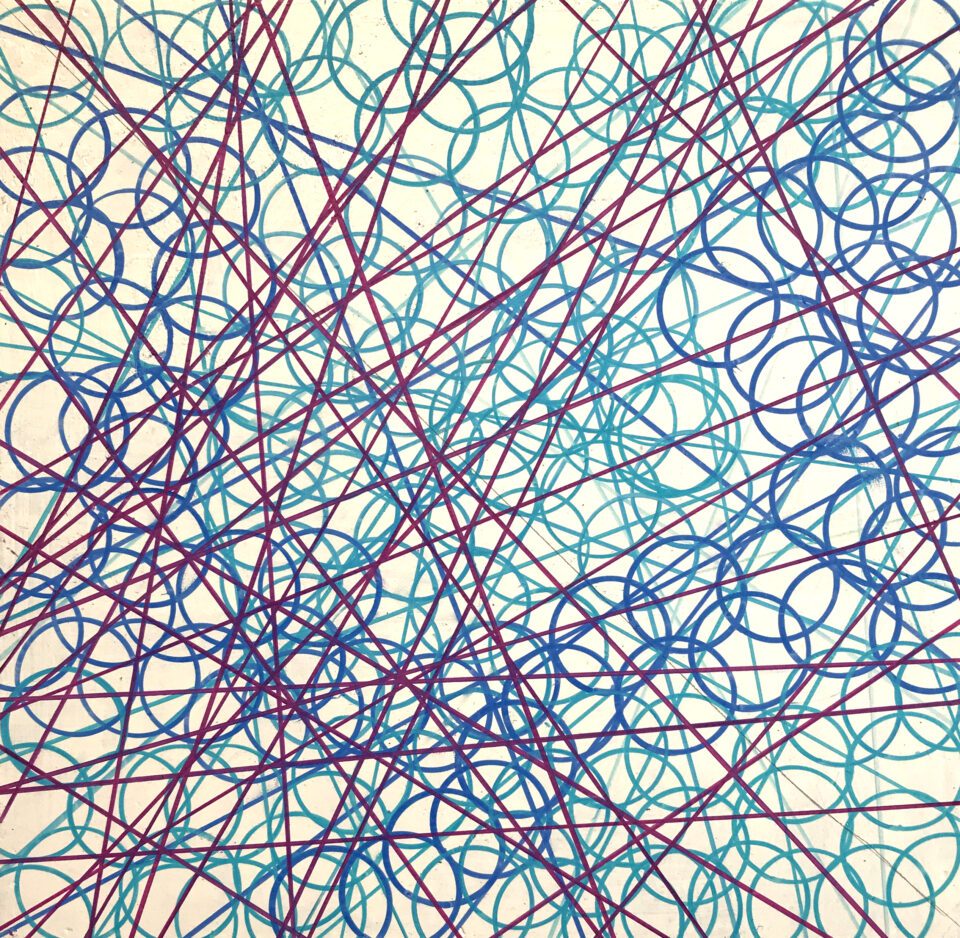
A: Will he create more paintings in this series?
DB: I hope my son will. I think they are interesting. I love them.
A: How do you involve your children in your work, specifically in your studio and in the creation of certain works of art?
DB: They have access to the studio as much as they want. But they have to want to go. I don’t force studio time on them. They can do anything they want. I mostly clean up and make sure brushes are rinsed and available. I paint with them if they want me to, but kids generally know what they want to do. It’s really wonderful. I hope they continue to enjoy it and see value in it.
A: Thinking about the past two years during the Covid-19 pandemic, how have your experiences of exhibitions changed?
D: Exhibitions were replaced with more one-on-one studio visits and communicating online. I hope people return to viewing work at exhibitions and in person. There’s really nothing like seeing a painting in person. Technology still really hasn’t replicated that. And I hope more collectors take advantage of visiting artists studios.
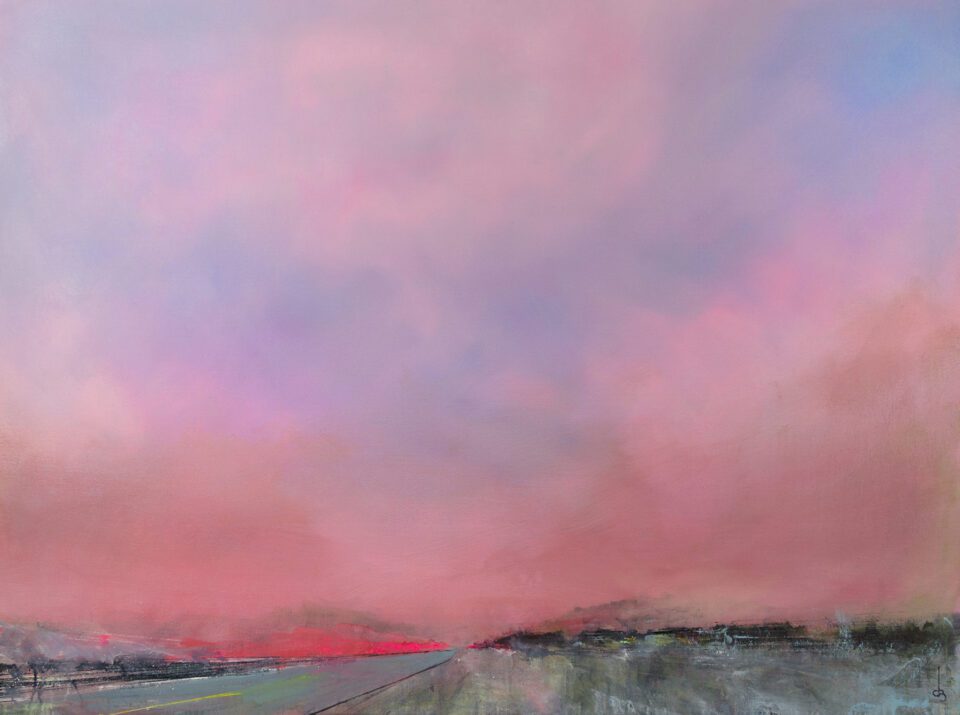
A: How is the group exhibition Fresh Perspectives at Walker Fine Art coming along? Have you had a chance to visit Denver?
DB: It opened in January and went well. It was all larger works. Denver is great. Walker has a great space and has been a fixture in Denver for two decades.
A: Where can we next see your work at exhibitions and art fairs?
DB: I have a show opening in New Hampshire in July at Nahcotta. My site always has updates as well as IG.
breidenthalart.com I Instagram: @dbreidenthal
All images courtesy of Derrick Breidenthal.
The work of Derrick Breidenthal appears in the Artists’ Directory in Issue 105 of Aesthetica. Click here to visit our online shop.
Derrick Breidenthal’s work has been longlisted for the Aesthetica Art Prize 2022.


